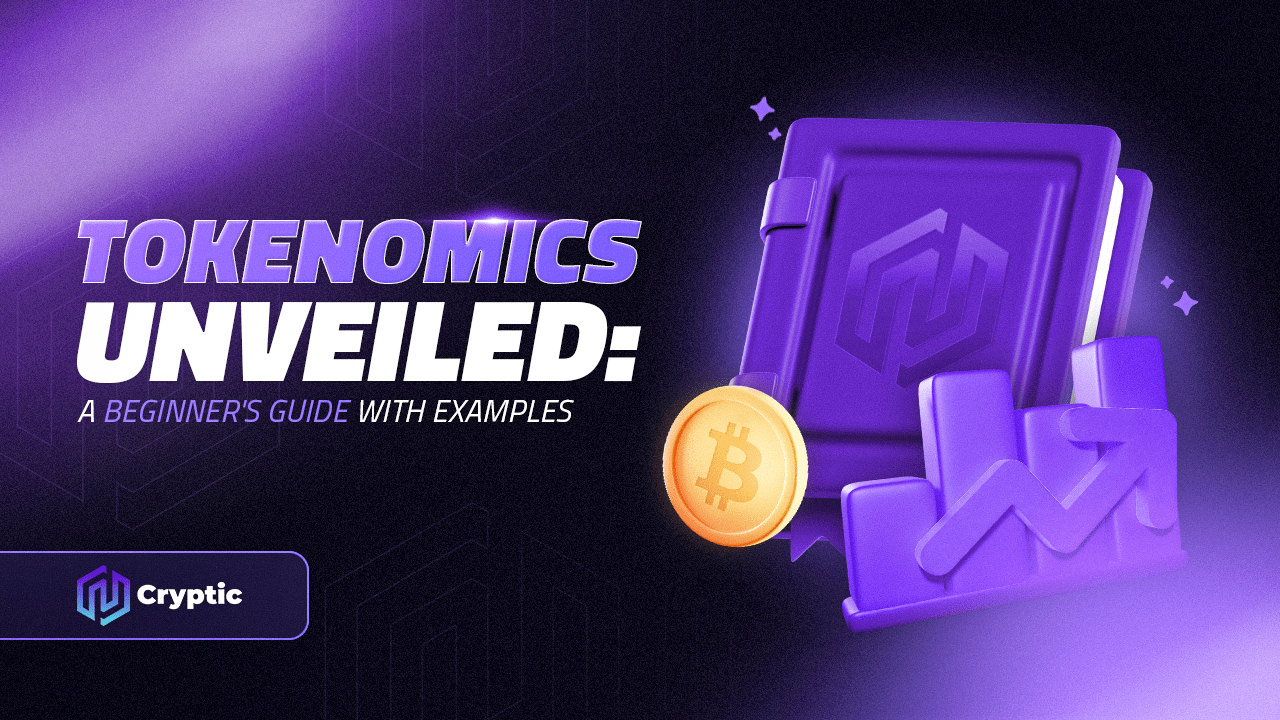
Tokenomics is the study of the economics of cryptocurrencies and tokens. It encompasses the creation, distribution, and management of tokens, as well as the incentives and mechanisms that drive their value and utility. Understanding tokenomics is crucial for investors, developers, and users alike, as it provides insights into the long-term sustainability and potential of a project.
This article will break down the complexities of tokenomics, using simple explanations and real-world examples to make it accessible for beginners.
What Are Tokens?
Tokens are digital assets that represent a particular unit of value within a blockchain network. They can be used for various purposes, such as representing ownership, access rights, or voting power. Tokens are often created and issued through a process called an initial coin offering (ICO) or token sale.
The Building Blocks of Tokenomics
-
Token Supply: This refers to the total number of tokens that will ever exist. Some tokens have a fixed supply, meaning no new tokens can be created, while others have a variable supply, allowing for the creation of new tokens over time.
- Example: Bitcoin has a fixed supply of 21 million coins. This scarcity contributes to its value, as the demand for Bitcoin increases while the supply remains limited.
-
Token Distribution: This refers to how tokens are allocated to different stakeholders, such as founders, investors, team members, and the community. The distribution model can significantly impact the token’s price and long-term success.
- Example: Some projects distribute tokens through airdrops, where free tokens are given to users who meet certain criteria. This can help to create a broader user base and increase awareness of the project.
-
Token Utility: This refers to the specific use cases or functions of a token within its ecosystem. A token with strong utility is more likely to be valuable, as it serves a real purpose beyond speculation.
- Example: The Basic Attention Token (BAT) is used to reward users for viewing ads and content creators for producing quality content on the Brave browser. This creates a strong incentive for users to adopt the browser and for creators to produce high-quality content.
-
Token Burning: This is the process of permanently removing tokens from circulation. This can be done to create scarcity, increase the value of the remaining tokens, or adjust the token supply in response to market conditions.
- Example: Binance, a cryptocurrency exchange, regularly burns a portion of its native token, Binance Coin (BNB), to reduce the total supply and increase its value.
-
Token Rewards: These are incentives given to users for participating in the network, such as staking their tokens or validating transactions. Token rewards can help to secure the network and encourage user engagement.
- Example: In proof-of-stake (PoS) blockchains, users can earn rewards by staking their tokens, which involves locking them up to help validate transactions and secure the network.
Understanding Tokenomics Models
Different projects employ various tokenomics models to achieve specific goals. Some common models include:
-
Inflationary Model: New tokens are continuously created, which can lead to price dilution over time. This model is often used to incentivize participation and reward users.
-
Deflationary Model: Tokens are burned or removed from circulation, potentially increasing scarcity and value. This model can help to maintain price stability and protect against inflation.
-
Hybrid Model: This combines elements of both inflationary and deflationary models, aiming to strike a balance between incentives and price stability.
Real-World Examples
Let’s look at some real-world examples of tokenomics in action:
-
Ethereum (ETH): Ethereum is a decentralized platform that enables the creation of smart contracts and decentralized applications (dApps). It uses a hybrid tokenomics model, with a variable supply and a combination of issuance and burning mechanisms.
-
Chainlink (LINK): Chainlink is a decentralized oracle network that provides real-world data to smart contracts. It uses a deflationary model, with a limited supply of LINK tokens and a burning mechanism to reduce the circulating supply over time.
-
Polkadot (DOT): Polkadot is a multi-chain platform that enables different blockchains to interoperate. It uses a hybrid tokenomics model, with a variable supply and various mechanisms to incentivize participation and secure the network.
Why Tokenomics Matters
Understanding tokenomics is crucial for making informed investment decisions in the cryptocurrency market. By analyzing a project’s tokenomics model, you can assess its potential for long-term growth, sustainability, and value creation. Additionally, understanding tokenomics can help you participate in network governance and earn rewards through staking or other mechanisms.
Conclusion
Tokenomics is a fascinating and complex field that plays a crucial role in the success of any cryptocurrency project. By grasping the fundamental concepts and understanding different tokenomics models, you can make more informed decisions about which projects to support and invest in. Remember, tokenomics is not just about numbers; it’s about understanding the incentives, mechanisms, and overall economic system that drive a project’s success.


Leave a Reply